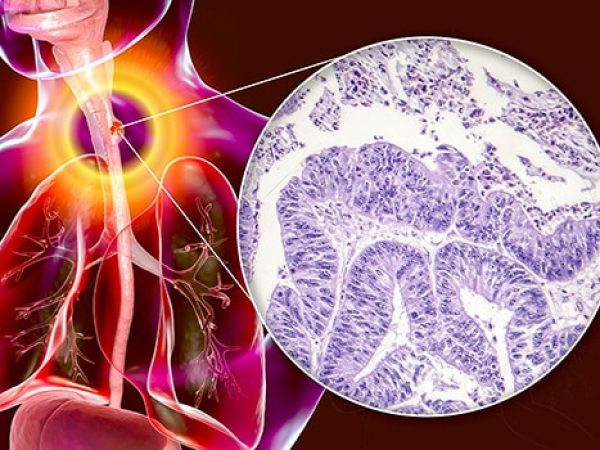Esophageal Cancer
Esophageal cancer starts at the inside lining of the esophagus and spreads outward through the other layers as it grows. The two most common forms of esophageal cancer are named for the type of cells that become malignant:
- Squamous cell carcinoma: Cancer that forms in squamous cells, the thin, flat cells lining the esophagus. This cancer is most often found in the upper and middle part of the esophagus, but can occur anywhere along the esophagus. This is also called epidermoid carcinoma.
- Adenocarcinoma: Cancer that begins in glandular (secretory) cells. Glandular cells in the lining of the esophagus produce and release fluids such as mucus. Adenocarcinomas usually form in the lower part of the esophagus, near the stomach.

The National Cancer Institute estimates that some 22,070 people in the United States will be diagnosed with esophageal cancer in 2025, and 16,250 people will die of the disease. The five-year relative survival rate is about 21.9%.
Smoking, heavy alcohol consumption, and Barrett’s esophagus can increase the risk of developing esophageal cancer.
Esophageal Cancer Prevention (PDQ®) Esophageal Cancer Screening (PDQ®) Esophageal Cancer Treatment (PDQ®)Source: National Cancer Institute



